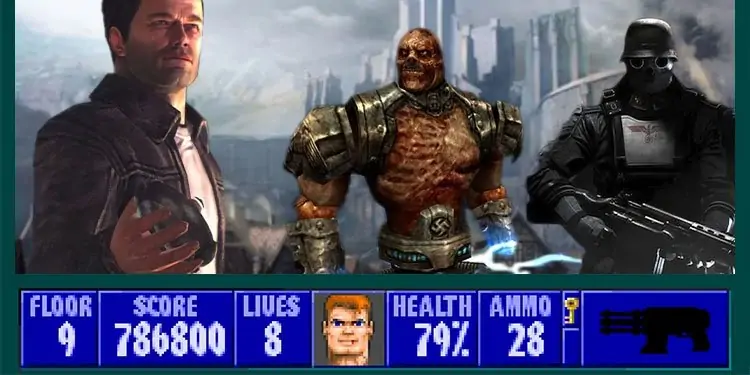Wolfenstein started as a stealth top-down shooter, and, throughout the decades, it evolved into a first-person shooter with Nazi robots and cyborgs.
The saga has not seen commercial success in years, but its legacy is undeniable. Much like the Doom saga, Wolfenstein is one of the household names that created the genre’s formulas.
Every Wolfenstein Game in Chronological Order
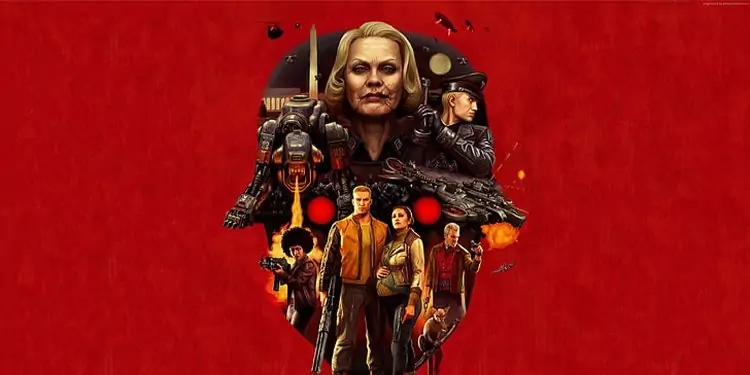
- Castle Wolfenstein – 1981
- Beyond Castle Wolfenstein – 1984
- Wolfenstein 3D – 1992
- Wolfenstein 3D: Spear of Destiny – 1992
- Return to Castle Wolfenstein – 2001
- Wolfenstein: Enemy Territory – 2003
- Wolfenstein RPG – 2008
- Wolfenstein – 2009
- Wolfenstein: The New Order – 2014
- Wolfenstein: The Old Blood – 2015
- Wolfenstein II: The New Colossus – 2017
- Wolfenstein: Youngblood – 2019
- Wolfenstein: Cyberpilot – 2019
Several changes of developments have taken Wolfenstein to different paths, but two things remain consistent: the protagonist is allied soldier B.B Blazkowicz, and Nazi soldiers are the enemies.
That said, there’re 13 Wolfenstein entries across four eras in the saga. These eras relate to different development studios.
- The first era goes between 1981 and 1992. Muse Software created the original two titles.
- The second era goes through 1992 and 2001. iD Software turned Wolfenstein into a 3D FPS, but the series wasn’t a commercial success.
- The third era goes from 2001 to 2009. Multiple studios tested different ideas under iD Software’s production and Activision publishing.
- The current era (2009 – onwards) started when ZeniMax bought iD Software. MachineGames took the mantle and created the saga’s modern titles.
Let’s check the saga’s legacy, plot, and evolution.
Castle Wolfenstein – 1981 (Muse Software era)
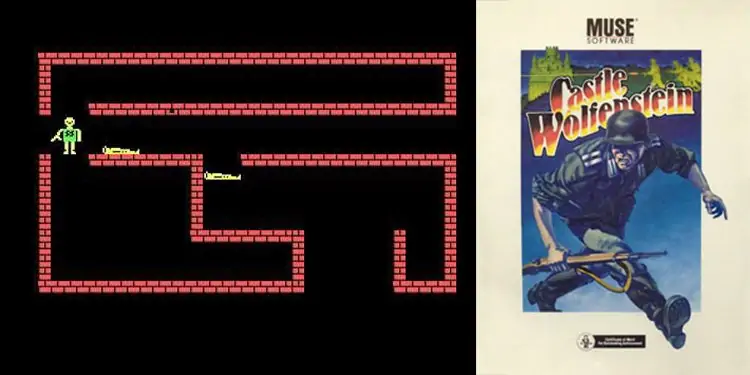
Muse Software launched Castle Wolfenstein in 1981 for the Apple II computer. It became one of the first games with stealth mechanics and the first computer game with digitized speech. Industry experts consider it the “grandfather of FPS games.”
The gameplay features a 2D top-down arcade stealth shooter. In essence, you play through a series of mazes full of enemies. You can sneak past or shoot the enemies to find the keys and exit.
Its plot happens during WWII. The player controls an Allied war prisoner, B.J Blazkowicz, who is escaping from Castle Wolfenstein. After breaking out of the cell, the protagonist has to find the Nazi’s secret war plan.
Beyond Castle Wolfenstein – 1984
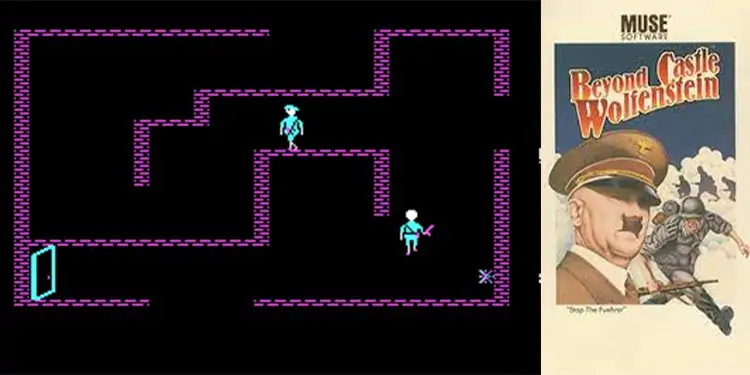
Beyond Castle Wolfenstein debuted in 1984 for the Apple II home computer, the Commodore 64, MS-DOS systems, and the Atari.
The sequel brought a very similar stealth-based side-scroller. You play through various levels in a secret Berlin Bunker. You can sneak through the levels or combat against the enemies.
The plot is about putting a bomb near the Fuhrer. Adolf Hitler is holding secret meetings with his senior staff somewhere near the protagonist. B.J. must find the meeting and plant the deadly trap.
Wolfenstein 3D – 1992 (iD Software era)
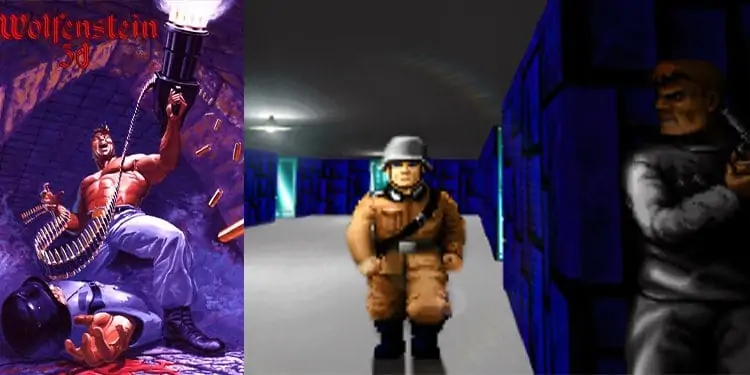
iD Software re-made Wolfenstein into a 3D first-person shooter genre and took the game to mainstream audiences. It debuted in 1992 for DOS systems as a shareware title under Apogee System’s publishing.
The goal is to find the exit, often an elevator, until defeating the final boss across a series of mazes. The enemies are Nazi soldiers and dogs, and the final boss is a cybernetically-enhanced Hitler. Then, the arsenal includes a variety of guns and knives.
The game included a UI that details the Floor level, the score, Lives, Health, ammo, and equipped gun. That said, the game uses the same engine as the original Doom titles, so these games are very alike.
Lastly, the plot follows Allied spy William “B.J.” Blazkowicz during WWII. He needs to escape from a Nazi German prison complex, Castle Wolfenstein. Nevertheless, he needs to steal Nazi documents on the way out.
Wolfenstein 3D: Spear of Destiny – 1992
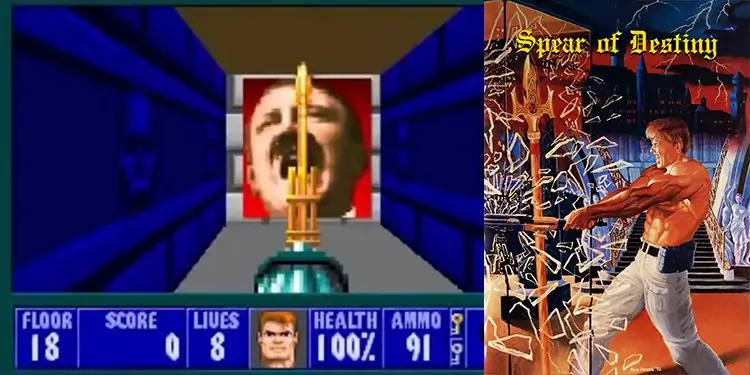
Wolfenstein 3D’s sequel debuted in 1992 for DOS PCs. FormGen Corporation was the publisher. The gameplay remains the same, but the story goes through 21 levels rather than six episodes like before.
It continues Blazkowicz’s story with similar gameplay as before. The title follows the protagonist as he’s looking to retrieve the stolen Spear of Destiny from the Nazis. This is a legendary weapon that grants immeasurable power to its wielder.
In 1994, iD Software released two new missions: “Return to Danger” and “Ultimate Challenge.” Cult followers name these chapters “The Lost Levels,” as not many people know their existence. Yet, the publisher released the base game plus the extra episodes as “Spear of Destiny Super CD Package.”
Return to Castle Wolfenstein – 2001 (iD Software production era)
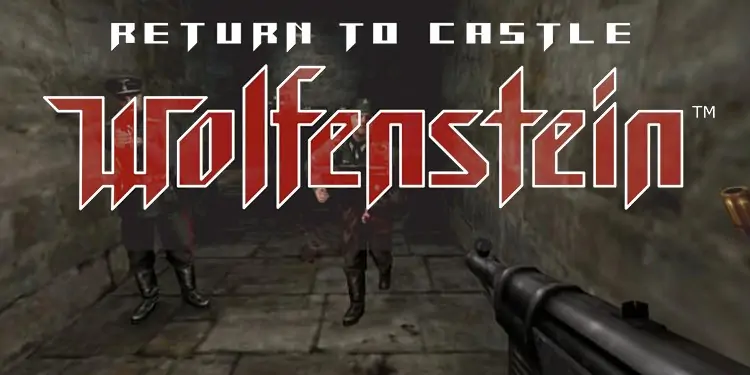
Return to Castle Wolfenstein debuted in 2001 for Windows, Linux, Macintosh, PlayStation 2, and Xbox. Gray Matter Interactive and Nerve Software were the new developers, whereas Activision became the publisher.
Notably, none of these studios had (or have) any significant experience. Instead, these developers had some duties in the Call of Duty franchise. Nevertheless, they continued Blazkowicz’s story on a mission against the German SS Paranormal Division.
The result was a straightforward FPS. “B.J.” goes through a large maze (a castle) to sabotage and assassinate nazis. Combat allows stealth elimination, sneaking, shooting, and looting armor. Enemies vary from undead, experimental creatures, and soldiers.
Aside from the story, the game had a popular multiplayer aspect. The game mode put Axis and Allies teams competing for opposing goals. Each team had access to classes, special weapons, and abilities.
Wolfenstein: Enemy Territory – 2003
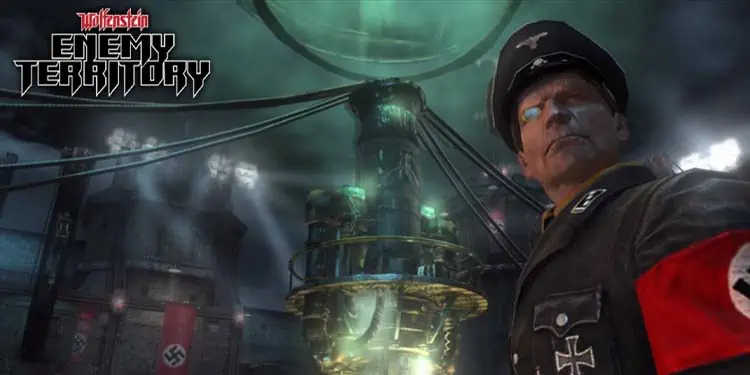
Enemy Territory was 2003 free and open-source FPS multiplayer. Its open-source code came from Splash Damage, once again under Activision publishing.
This title has no storyline and no single-player. Instead, the multiplayer expands on the Allies vs. Axis idea. Each team defends or destroys objectives. It also had classes, special weapons, and XP points to unlock skills.
Enemy Territory had six official maps based on real WWII locations. The gaming community has also created hundreds of maps, weapons, and tweaks.
Wolfenstein RPG – 2008
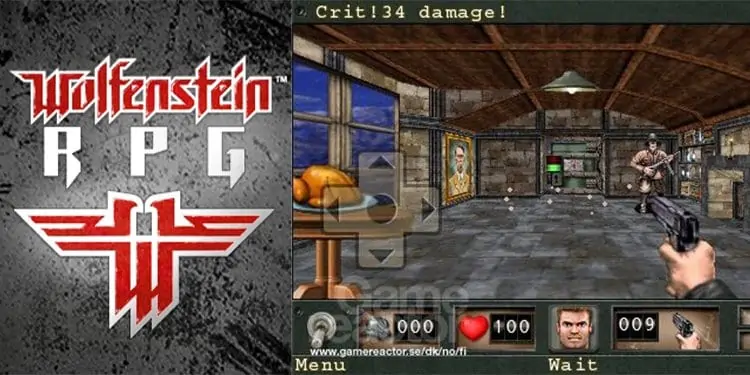
Wolfenstein RPG debuted in 2008 for mobile phones and 2009 for iOS. iD Software created the title, and Fountainhead Entertainment distributed the entry.
The formula mixed FPS elements with role-playing features. The gameplay is akin to Doom RPG, also a mobile game. You played in first-person, but combat and movement were turned-based.
The plot follows “B.J.” once again. The Nazis captured the hero, and it’s up to him to escape from The Tower and defeat the German Paranormal Division.
Wolfenstein – 2009
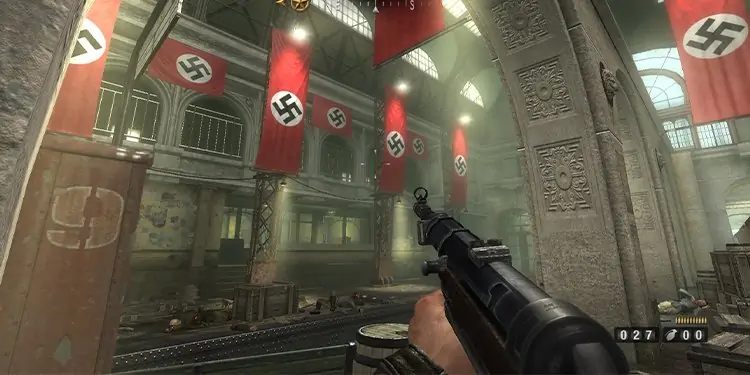
Raven Software created the 2009 Wolfenstein game. It debuted for Windows, PlayStation 3, and Xbox 360. Once again, Activision was the publisher, and iD Software was the executive producer.
The game had a poor commercial performance. It sold less than 100,000 copies, so it was the final Wolfenstein under iD Software supervision. Also, ZeniMax Media had bought iD Software, so they moved on to other projects.
Either way, the game follows the usual protagonist on a quest to find a supernatural medallion. The setting is deep below a Nazi mine in the fictional town of Isentadt.
The gameplay offered a linear FPS across a series of levels against Nazi soldiers and inhuman creatures. However, it added various sci-fi weapons and horror elements to spice up the formula.
Wolfenstein: The New Order – 2014 (MachineGames era)
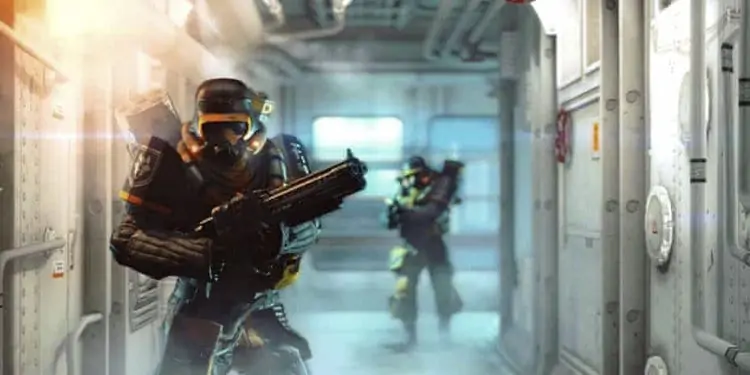
The New Order debuted in 2014. Machine Games was the new developer, and Bethesda Softworks became the publisher. The title debuted for Windows, PS3, PS4, Xbox 360, and Xbox One. It works as a soft reboot of the series.
Its plot happens in the 1960s. It’s an alternate storyline where the Nazis won WWII. The protagonist is the same, and he must stop the Nazis from ruling the world. There’s a strong focus on the narrative and, regarding graphics, the game uses iD Software’s iD Tech.
Gameplay-wise, it’s an FPS where you navigate a series of levels. As usual, you can sneak, stealth-kill, and shoot. There’s also a new cover system, new to the series. Another novelty is the morality system: B.J. makes choices that may alter the storyline and timelines.
Fans and critics received the game with positive reviews. Overall, it has a nice narrative, great combat gameplay, and graphics that still stand. Many years later, it still conserves a loyal fan base.
Wolfenstein: The Old Blood – 2015
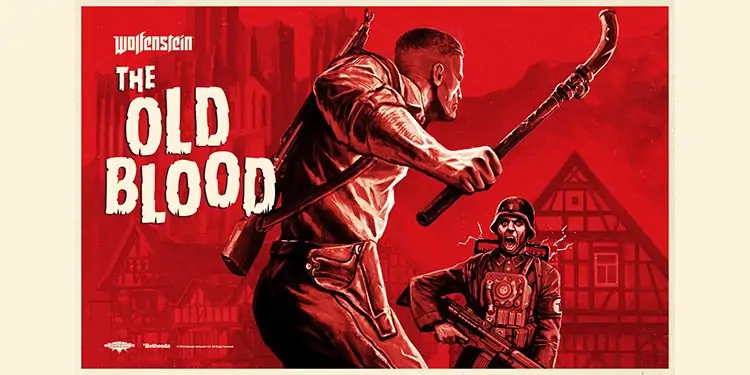
The Old Blood is a prequel to the previous game. It debuted in 2015 for Windows, PS4, and Xbox One. Machine Games and Bethesda Softworks are the duo behind the game. Together, they added horror and survival elements to the game.
The campaign follows Blazkowiccz trying to discover a Nazi compound in 1946 after the Nazis won WWII. It’s an alternative timeline within a game that focuses more on the narrative than ever before.
The gameplay offers a linear FPS with action-adventure elements across various chapters. Also, the campaign has two parts, and the climax revolves around a dark ancient power and a Nazi archaeologist.
Wolfenstein II: The New Colossus – 2017
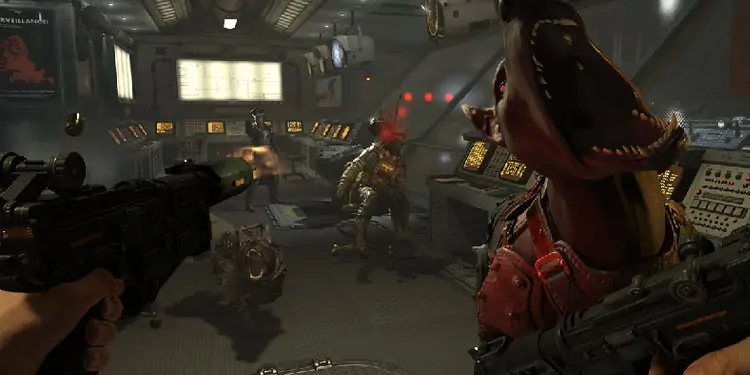
The New Colossus debuted in 2017 for PS4, Windows, Xbox One, and Nintendo Switch. MachineGames is the developer, and Bethesda Softworks is the publisher.
Colossus follows “B.J.” fighting the Nazi regime in the United States five months after The New Order. There’re binary choices in the prologue which can alter the game’s storyline.
The experience is an FPS shooter happening across various levels and chapters. Lastly, the enemy and weapon variety is greater than before.
Wolfenstein: Youngblood – 2019
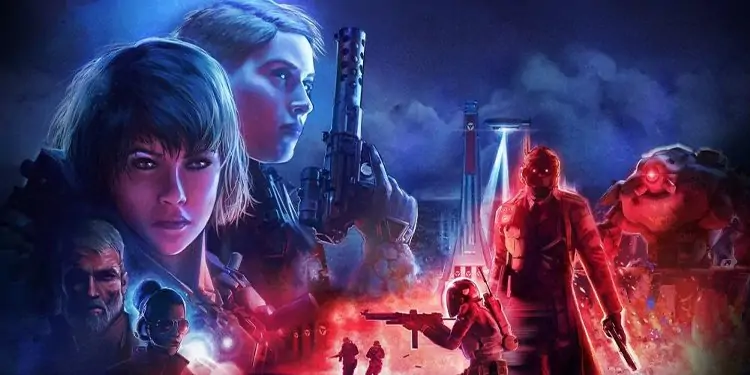
Youngblood debuted in 2019 under MachineGames and Arkane Studios. As both developers belong to Bethesda, the latter published the game. It debuted for Google Stadia, Windows, Nintendo Switch, PlayStation 4, and Xbox One.
The plot is 20 years after The New Colossus (1980). America and much of the world are free from Nazi control. However, B.J. goes missing, and her two twin daughters (Jessie and Zofia) travel to find him.
Players can use either sister, and the other one can be an AI partner or a co-op partner. Other novelties include a semi-open design, the ability to unlock gear and abilities, and a central hub.
Wolfenstein: Cyberpilot – 2019
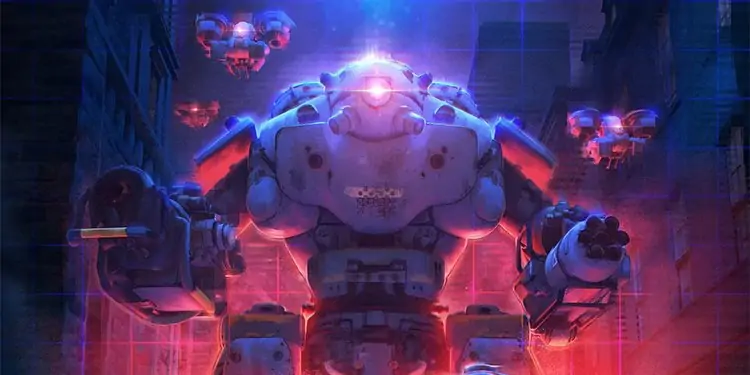
MachineGames and Arkane Studios launched Cyberpilot in 2019. It’s a VR shooter available for PlayStation 4 VR and Windows (HTC Vive and Oculus Rift) for PS4 and Windows.
The story presents a new protagonist, 20 years after The New Colossus and a week before Youngblood.
You play in first-person as a Cyberpilot, a computer hacker working against the Nazi Regime in France. In essence, you control a fully-armed robot across several levels and against hundreds of Nazis.

